This is a guest post from Malcolm McCracken from Better things are possible taking a dive into the development plans for the one of the highest density government-led housing developments. It first appeared here.
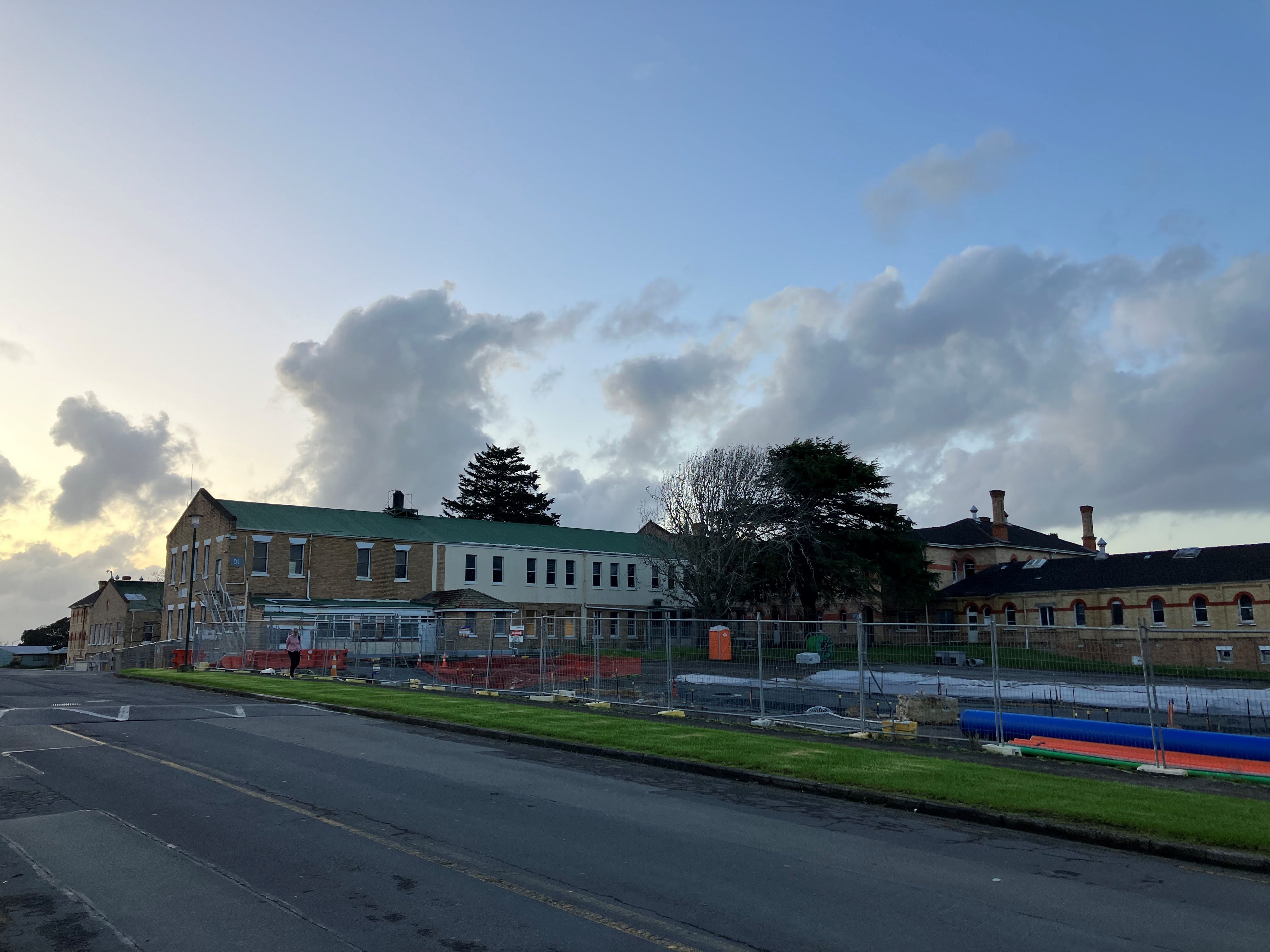
Enabling works at the Carrington Development, previously the UNITEC Mount Albert Campus, is ramping up. Since the Crown purchased the land in 2019, there has been little coverage in the media around the development. This article covers all publicly available information on what has been consented so far to provide insight into what we can expect to see developed over the coming decade.
Background
The Carrington development is a large-scale urban development led by the three Tāmaki Makaurau rōpū of Marutūāhu, Ngāti Whātua and Waiohua-Tāmaki and their project partners. It is being facilitated by the Crown via Te Tūāpapa Kura Kāinga – Ministry of Housing and Urban Development.
The original announcement was that the government had bought 29.3 hectares of land to deliver between 3000 and 4000 new homes. In 2022, an additional 7.6 hectares were purchased from UNITEC, expanding the potential number of new homes by between 500-1000. Currently, this land is going through the fast-track consent process for subdivision into 7 mega lots for development.
Why is this a good location for a major housing development?
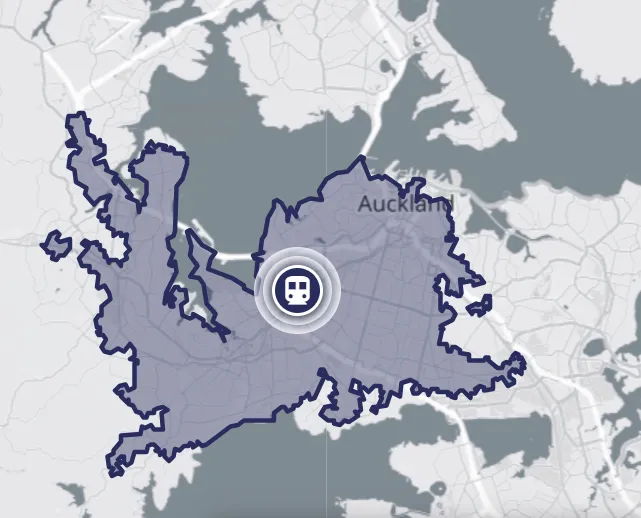
The area is fairly accessible by public transport. Much of the southern half of the development is within walking distance of the Mount Albert Train Station, which should be just under a 20-minute ride from Te Waihorotiu Station in midtown, once City Rail Link opens. This will improve the accessibility further.
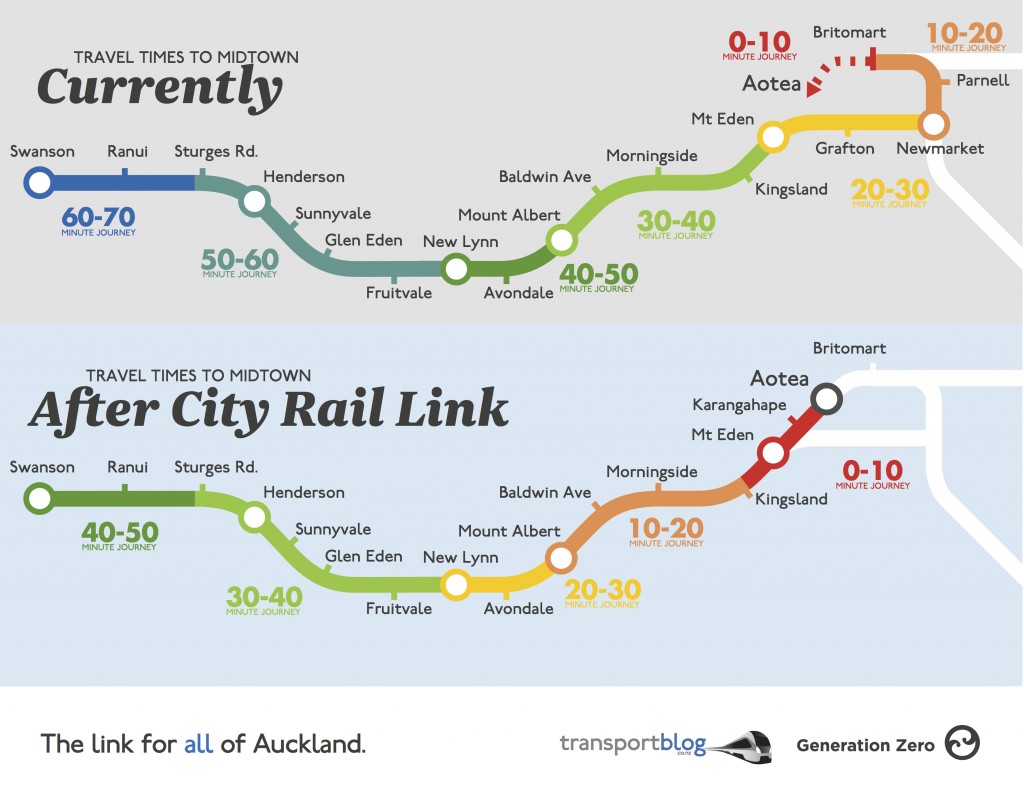
The area is also well served by frequent buses on Great North Road to the City and North West, as well as the Outer Link and 66 crosstown route, which currently operate on Carrington Road. In terms of existing bus services, the area is relatively well-served, despite the lack of rapid transit connection to the Northwest for now.
This is not to say that no transport infrastructure improvements will be happening. In late 2022, the government confirmed funding for a $113m upgrade of Carrington Road to introduce bus lanes and separated cycleways, though resource consent documents for parts of the development indicate that construction will not start until 2025.
Public space and buildings
The existing road network is planned to be upgraded to provide a two-lane road with new footpaths, street trees and a bi-directional cycleway.
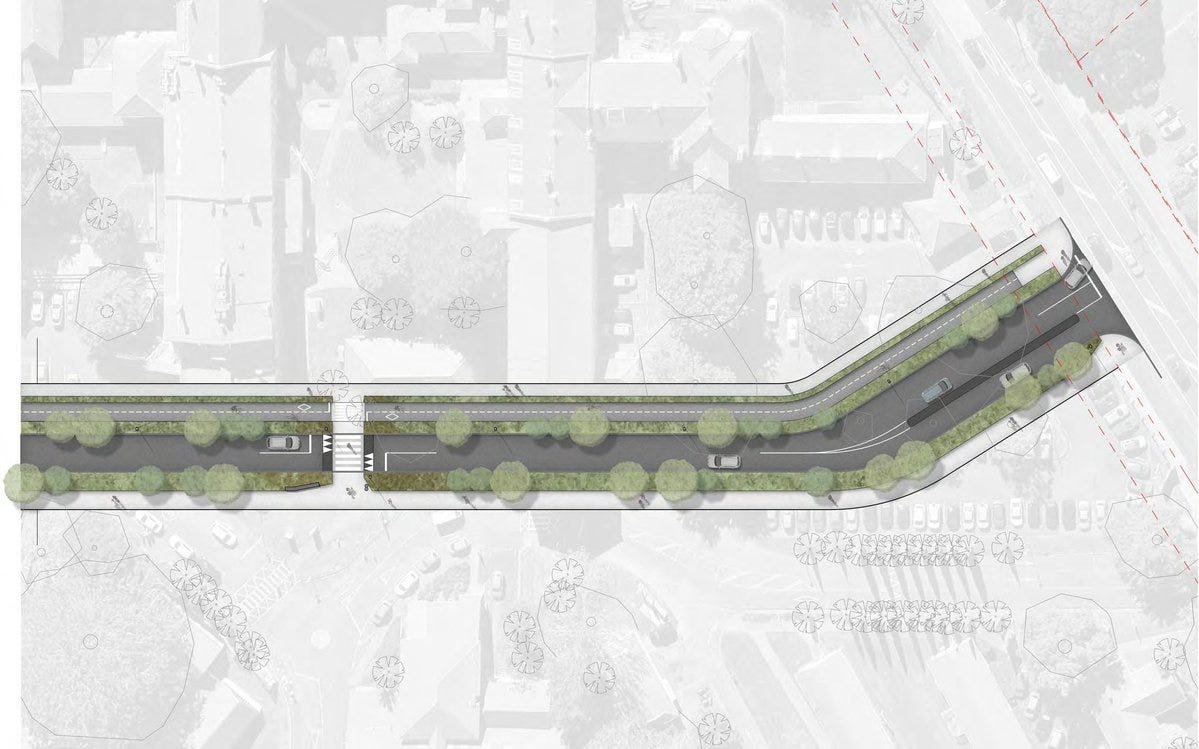
This effectively bypasses a section of the Waterview Shared Path, creating a more direct connection to the Northwestern Shared Path. This is now under construction, with work visible from Carrington Road.
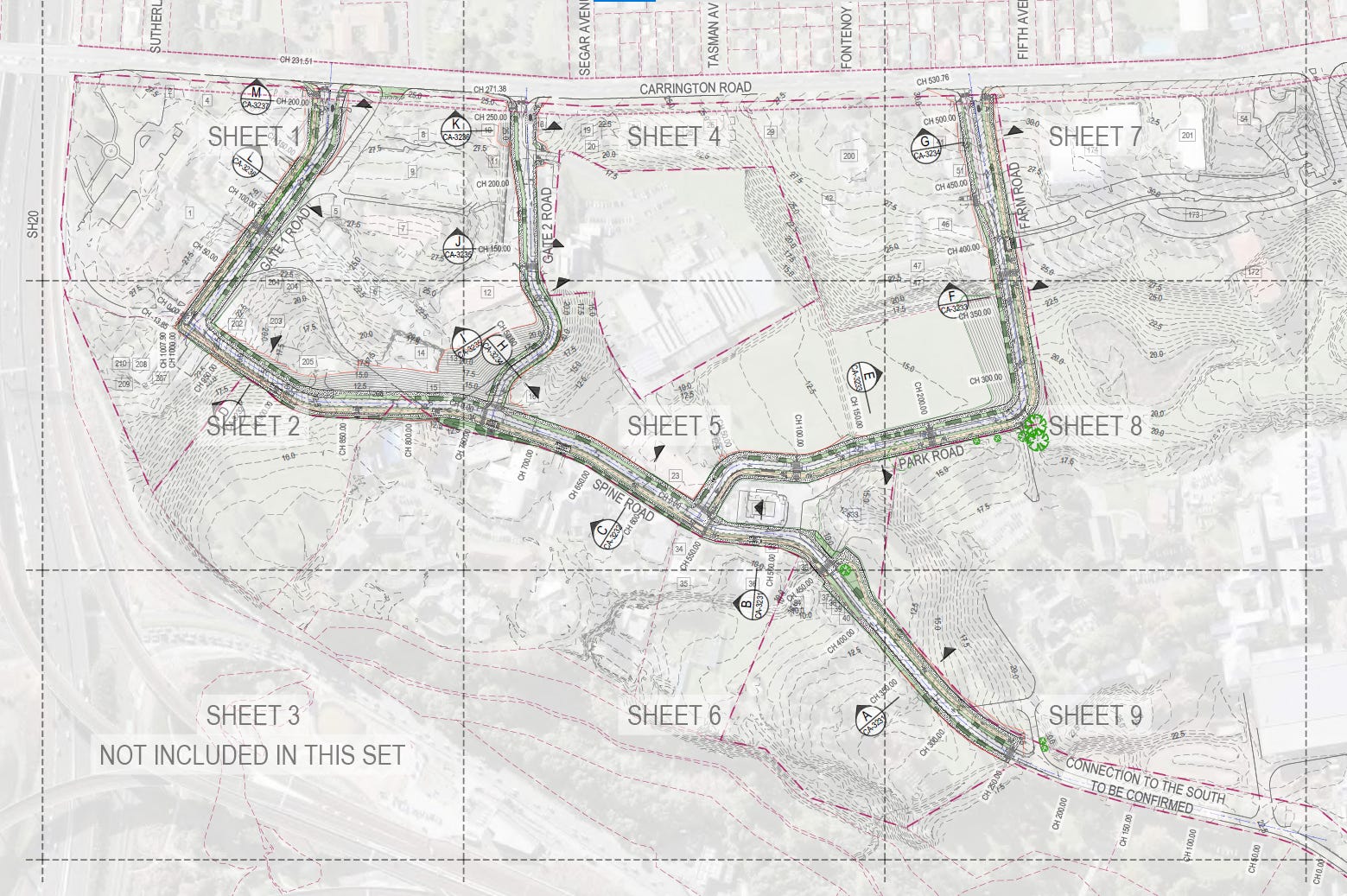
Of significant interest to the existing and future community is the heritage-listed former Carrington Hospital building. It appears as though it will have some community purpose, alongside an upgraded public space on the north side, which will also realign the Northwestern Shared Path to align with the crossing to Sutherland Road.
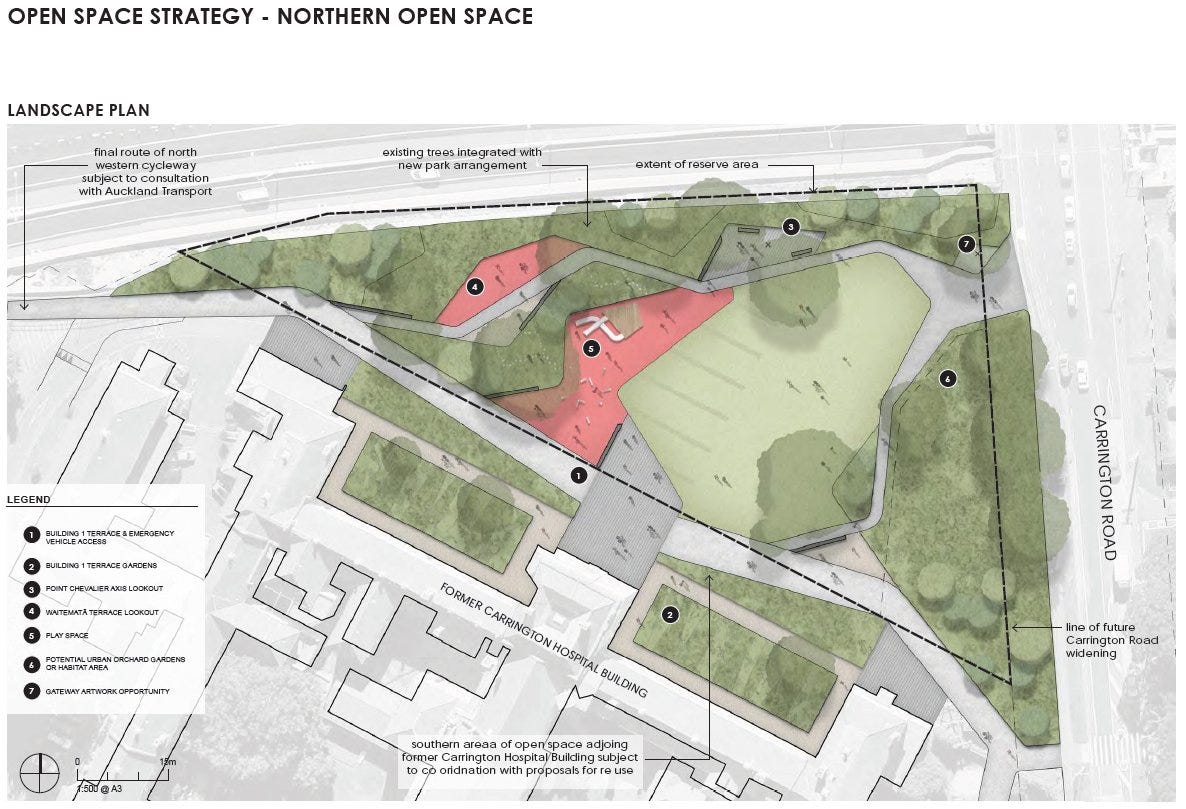
What about the actual housing?
Ockham Residential, one of the largest residential developers in the country, have developed a reputable partnership with Marutūāhu, an iwi collective. Their area of the Carrington development is called Maungārongo and will largely cover the eastern and northern parts of the site. So far, two stages of the development have been granted consent through the Covid-19 fast track consent process.
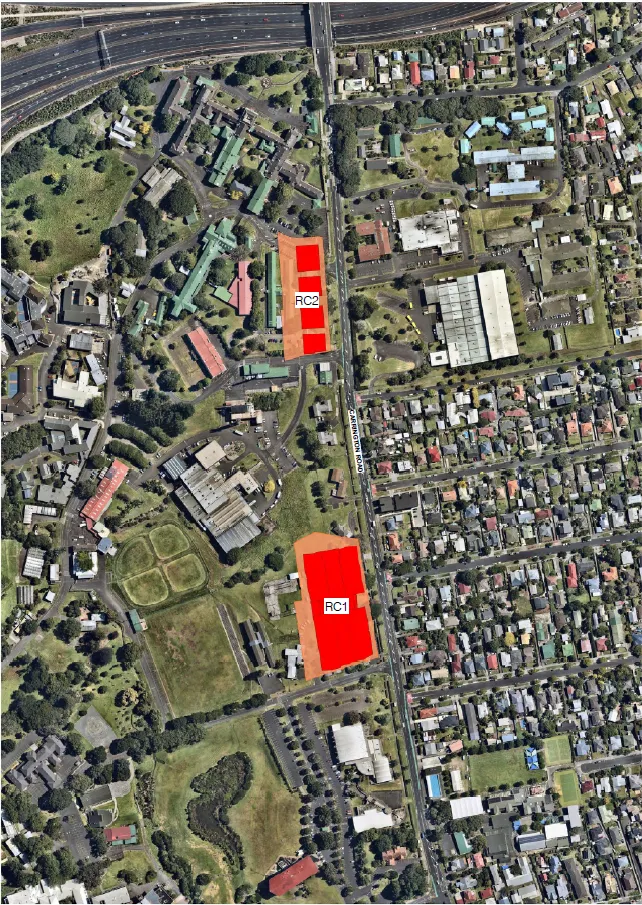
The first building of four in Stage 1 (RC2) of the Maungārongo was recently launched. Named Toi, completion is currently expected for early 2025 though with slow sales, this may be pushed back. Across the four buildings in that block, 266 homes are set to be completed with 540 bike parks, along with 6 retail spaces.
Maungārongo is understood to be developed with a centralised and staged approach to parking. Initially, residents will be able to rent a space in a temporary at-grade car parking to the west of Toi. In the future, as the Maungārongo precinct develops, permanent car parks will be built in centralised locations. This will support the buildings to be primarily accessed through pedestrian-focused laneways, where car access will be managed for deliveries.
This approach to parking allows the first residents to own a car if required without the sunk cost of buying a car park which can cost $60,000 or more. Public transport options are set to improve over the next decade meaning at a later point, residents can choose whether or not to buy a separate car park and the developer can deliver the right amount of car parking.
Stage 2 of Maungārongo has also been consented under the Covid-19 fast-track consent process with 381 apartments, a 1500m2 ‘Metro’ supermarket plus other retail and commercial spaces set for the corner site beside the existing Farm Road intersection. There are 1034 bike parks planned with a strong bias to floor mounted over hanging and 176 car parks, around a third of which are for the supermarket.
Ngāti Whātua has also utilised the fast-track consent process for the first stage of development in their development area, the Wairaka Precinct. The consent covers 50 townhouses, as well as the extension of the street network. The consent also includes an upgrade of the Waterview Shared Path to have separated walking and cycling paths, connecting with the upgrade of the internal roading network. Notably, this appears to finish in a cul-de-sac. This would make the development a low traffic neighbourhood with only bikes and pedestrians able to continue through, removing through traffic.
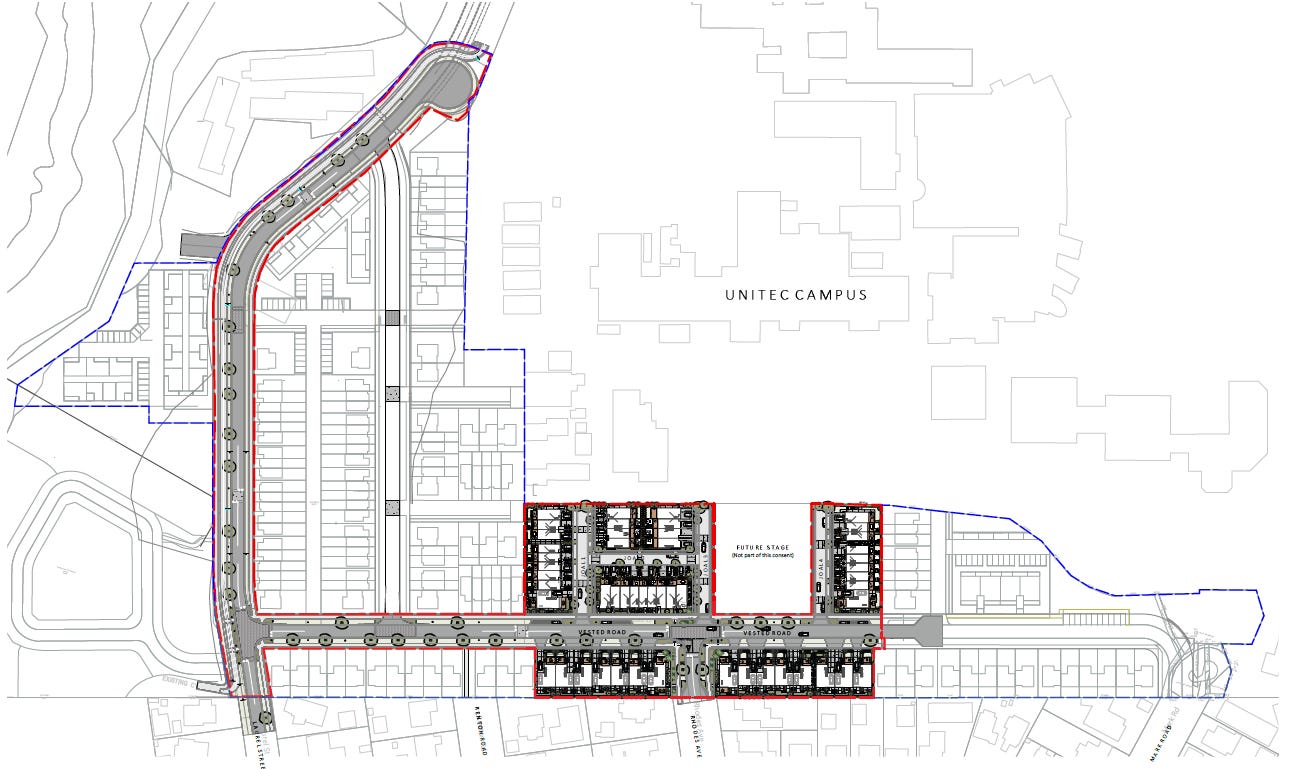
The development is planned to deliver between 4000 and 5000 new homes. While only limited stages have been consented, the shape and feel of the development is starting to emerge. There is real potential for this to become one of the most vibrant and liveable neighbourhoods in the city with dense, well-designed housing located close to transport options, and open spaces including the Oakley Creek reserve. It will be interesting to see how fast the development occurs with the current market and higher interest rates.
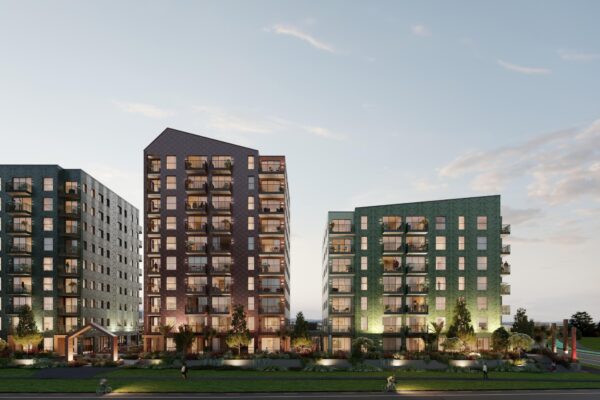
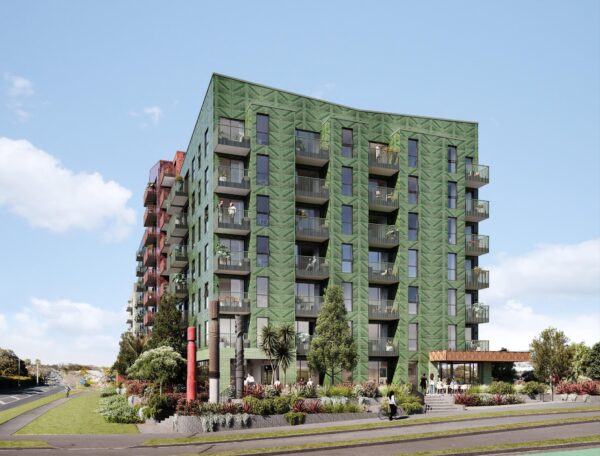
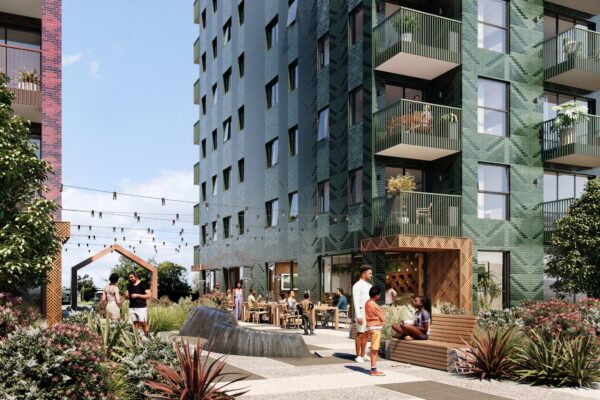
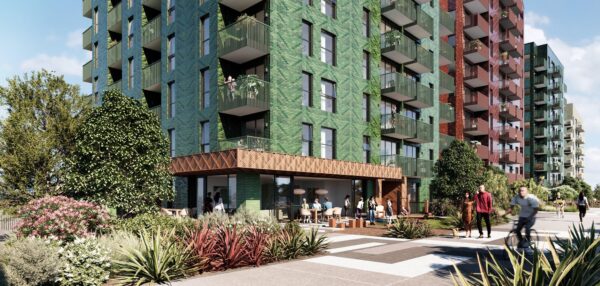
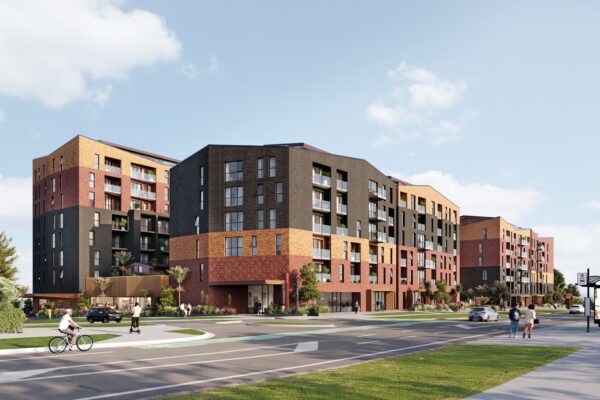
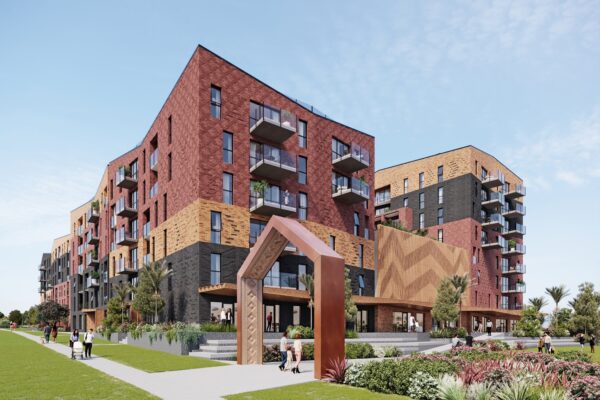
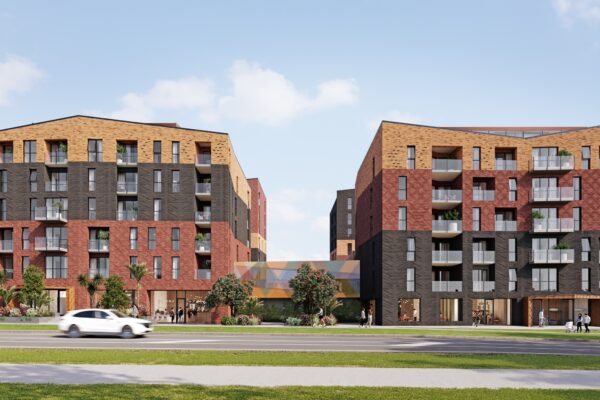
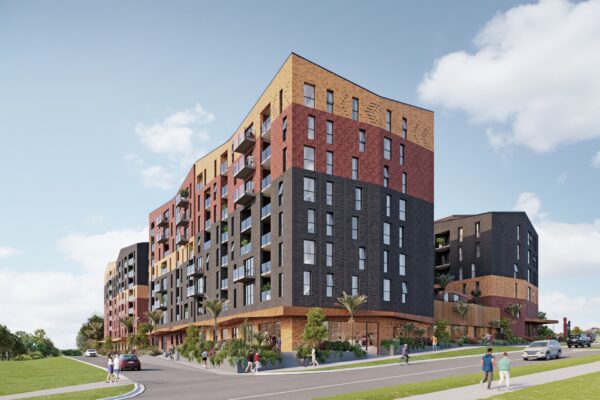

 Processing...
Processing...
“though with slow sales, this may be pushed back”: Its a pity the government can’t bring themselves to open their wallet and build it regardless of house prices. I am very much a small government type person, but when there is a downturn that is the right time for the government to step in and ensure houses are still getting built. A good government saves during the good times and invests in the bad times.
This is crowns land NOT MAORI LAND and govt has taken too far Maoridom! I am Pacifika and we rule NZ we were here 1st way b4 MAORIORI
You should interrupt some politicians and shout that at them. They would love to hear it.
Good to see it is all looking to be medium-medium/high density. All developments in close proximity to good PT and close to the city should be like this. Good to also see shops and a supermarket actually included in it too.
I agree. This looks good. It will be a welcome addition to the area. I walk through the area frequently, and the stream revegetation / clean up work they’ve already done is really pretty, too.
I’m impressed with the approach to car parking,it will allow people to make informed decisions about car ownership and use.It brings into daylight some of the actual costs of excess car ownership, most people know it’s a huge financial cost,but this separates the parking figure out for them.
Spent the weekend, sorting a family member out with an ebike for commuting,they are in similar position to these proposed residents,commute Mangere to Avondale, one carpark per unit,total cost including clothing,under $3500,potential saving $100 per week. The ebike market is now very broad,some units $1500.
The approach to car parking has good elements – for example, it’s good that the cars will be parked separately from the apartments – but there’s just too much of it. The ratio of carparking to apartments is excessive in this day and age, for a brand new development of this scale and level of amenity and connectivity.
I would welcome the developers to rethink the level of carparking, and instead look at share vehicles for special purposes part of the package (eg vehicles that can cope with potholes and open roads, vehicles that can carry bulk materials, vehicles that can carry groups of people, e-cargo bikes, e-trishaws for picking less mobile visitors up from the train, e-bikes to hire for ).
Critical to a successful outcome will be consistent charging for the at-grade carparking, and enforcement, so that a culture of getting away with whatever you can doesn’t develop.
“but there’s just too much of it. The ratio of carparking to apartments”
What ratio is proposed?
In 2020, it was: “a ratio of 0.95 carparks to each dwelling” I doubt that’s changed, but I’d love to hear otherwise.
The provision of too many carparks, and the unnecessary supersizing of Carrington Rd at great cost (and with blowouts on the way, undoubtedly) illustrates why AT has no budget left for meeting our DSI-reduction and emission-reduction targets.
That they cannot see this location holds no barriers at all to working within the existing road corridor footprint, whilst improving safety and liveability, and increasing person capacity, sums up AT’s addiction to “predict and provide” planning altogether.
No supersizing of Carrington Rd, just making room for bus lanes and bike paths. And a lane each way for trucks and cars. Don’t supersize your critique- the issue of being able to downsize car parking is very important.
Is there a chance to have input to the carparking provision still, do you think? It’d be great if AT are in discussions with the developers about reducing it.
Perhaps I should write a post to explain how to achieve a far better outcome in this corridor, affordably. With VKT levels returned to a much healthier level, the corridor simply doesn’t need to be four traffic lanes wide. Rather than removing buses from the congestion, we should remove the congestion from buses. Two vehicle lanes are sufficient when other measures to reduce VKT are used, with bonus measures at peak hour. This way, the protected cyclelanes can be fitted within the corridor through road reallocation.
I think regardless of ratio, providing parking in one centralised location is a big improvement on the usual practice of putting parking spots near each and every dwelling. It effectively makes most of the streets in the development car free.
For the ratio, I guess they can wait and see how many buyers and renters also get a car park?
Haha. One car park would be one too many for Heidi.
Yes we were at Hobsonville Pt at the weekend, it is very much car dominated. We need to provide developments that show you don’t need a car to enjoy life.
Hobsonville Point without a finished ferry access, a bus rapid route or finished nearby employment (for those who can afford the homes) is still looking like Hobsonville Pointless. It needs more if it’s going to really prove itself.
I think realistically homeowners need car parking space. As life generally will not be based or revolve around Carrington Rd for the residents. Have you yourself tried to live without car park space or having to buy the space?
> total cost including clothing,under $3500,potential saving $100 per week
Sounds good until you take into consideration the increased risk of death or serious injury and subsequent loss of income through being unable to work.
Really! I have been cycling to work for 14 years and have never had injury that stopped me going to work.
They just make shit up Wayne. Just ignore it everybody else does.
I guess that’s why you are here, Joel. Ignoring things.
Leaving it all to the market along with a potential National/ACT government for several years I hope this doesn’t turn into a wasteland like another Albany. As Jimbo says, Government should be building through bad times and saving in good.
Construction is well underway for the first apartment block with ground work and foundations in the area nearest where Oakley Creek passes under Gt Nth Rd. The central area ground works and road realignment near Sutherland St is also well progressed. And monday last week the southern area was all fenced off with a clearing operation starting this morning. There are multiple apartment blocks for this area too.
All of these must have budget assigned and contracts in place for completing the construction – so very unlikely to be changed or stopped. Albany was only ever a plan and was on the fringe of the city. Different circumstances.. My only question is if the density of the development has been increased over what was originally proposed – given changes and proposed changes to planning rules that have occurred since.
I think the foundations you refer to near Oakley Creek which can be observed from Great North Road are in fact the foundations to an extension to the Mason Clinic. But, yes the enabling works opposite Sutherland Rd appear to be picking up pace. The green roofs of the adjacent timber buildings are starting to be removed.
https://www.tewhatuora.govt.nz/about-us/news-and-updates/older-news-items/work-begins-on-replacement-162-8-million-60-bed-forensic-psychiatry-facility/
Some nice looking buildings getting and have been built for mental health.
P.s thanks for the post Malcolm, I follow your blog and twitter and always good to see more Urbanism/Development discussion here 🙂
This is certainly a very good area for this type of apartment style with extensive natural surrounds. I am personally a particular fan of OCKHAM and the serious effort they have put into making it possible to build good quality, and well priced apartments.
Their dedication to allowing for anti fossil fueled residents is also respectful. That sales are slow is not surprising but indeed being stuck in these construction boom/bust cycles only hurts affordable housing developments and limits our ability to address climate change.
Apartment living around good public transport links is vital to convert this place into a truly modern city; and to leave the town style politicking that keeps important decisions affected by the post code lottery, and other pseudonyms we enjoy using for addressing the continued colonial harm that fossil fuel has converted into terrible health outcomes.
It is obvious that well-contructed apartments are the best residential solution for ground water and other climate emergency weather events, and it is on both Wellington and Auckland to ensure that planning rules allow for these communities to develop.
The added bonus being that we can begin to dismantle the private automobile myth and return our great city-scape to the people!!!
Very happy that Google suggested this article to me. As an Auckland resident for only 5 years, and a current Unitec student, more medium and high density living like this is exactly what Auckland needs. I really hope it gets seen through to completion as intended
Interesting proposal, it would definitely bring more life into the area. I wonder what’s happening with the Old Carrington Hospital though. The building is listed as a category one heritage building and demolishing such a structure would be a shame. I hope there are plans to adaptively reuse the heritage building as it carries its own value with it.
As the article says, apparently the hospital will have some kind of ill-defined “community” function. Although frankly – though it is a beautiful building – as a former “lunatic asylum” (read: torture chamber for people who were a bit odd), part of me thinks it should be torn down and replaced with a monument to the people who were incarcerated and died there. (Yes, I’m aware that by the end of its life, psychiatry had become more humane, but before then.)
Have you been to the marae and seen the carving there? It’s stunningly beautiful and responsibly documents the history of the site through the centuries. There is one carving depicting the windows of the hospital, through which you can see a carving representation of the artwork of one of the hospital residents (who was resident there around 1949).
I think there are ways to incorporate dark history respectfully and still keep the old buildings. I’m sure the old prison in Christchurch had dark history, but when I stayed there it didn’t seem inappropriate. Removing the buildings is problematic too in an “out of sight, out of mind” way. You’re simply not reminded of what went on.
I agree, and I think there are a multitude of ways of retaining history and adding heritage value to the area. There are examples across the world that have restored buildings with a similar dark history and have adaptively reused them – you end up in a place that has a strong story to tell which I think is powerful.
Tearing it down seems unnecessary in my opinion, unless there are seismic issues which require lots of retrofitting that the budget becomes an issue. It is also more sustainable to use what is already existing rather than demolishing and creating something new from scratch. The country has lost far too many heritage buildings and sites and will continue to lose its heritage value if the same things keep repeating.
I agree, and also a monument would be a reminder for people to enable future generations to remember history and the lessons our community leaders need to remember.
I hope that the facade will be retained but that the building itself will be demolished and rebuilt.
I have spent some time working in there and the layout of the building with confusing corridors and hidden spaces is not conductive to a public use – I don’t think – plus very creepy when you get lost trying to find the toilet!
The building is already undergoing partial demolition after a series of court hearings. It is a shame that this is proceeding when there proven ways to solve this issue.
The same goes for retaining the façade and removing everything behind it. It’s not sustainable or a wise decision to remove heritage because the layout doesn’t work for some. The chaotic layout can instead be used as an advantage for a public space that may demand that for its use. Otherwise adaptive reuse is possible too. When material and labour cost are on the high, we need to make use of what’s existing. Not to mention it’s a category one heritage building…
Wow! These complexes have things in common with medieval castles! Not implying that there is anything ‘bad’ about it. I wonder if anyone has thought about that….its fun to watch Timeline documentaries. Many of the the foundation ‘footprints’ of these ancient living complexes are being discovered using electronic scanning. Nothing ‘new’ under the sun!
It’s great to see more master planned development’s, but like the north coat devalopment, there are some unusual choices made, I get the feeling this is a kainga ora devalopment with its unusual patterns in the brick and lack of basement parking,
I really don’t like the idea of cars being parked in large open parking lots, this will make the place look like a big box store lot, parking should be hidden away in a parkade basement or behind individual garage doors.
I like the use of red brick, even the green brick is unique, it is timeless And It’s good to see some thought being put into the aesthetics of the buildings, but patterns on the cladding is a poor from of art when art should be in the form of the building and it’s landscaping, this could put many buyers off and will be very hard to fix as we know how well paint sticks to brick.
Re “parking should be hidden away in a parkade basement or behind individual garage doors.” – Yes I agree but it ain’t going to happen in Kainga Ora tenancies.
Creating a mass parking area will facilitate some form of ‘land-banking’ for future intensification, in anticipation of a time when cars will be ‘unaffordable’ for most people…
NZ Public housing has always been designed and built to a ‘lifestyle’ prescription. I came across a historical document that described the prescription for the old style state housing. Privately built housing of the era was also designed like this too. State flats especially were mostly designed to suit the predominant ‘worker’ orientated lifestyle, with frustratingly small galley-style kitchenettes, a lounge, enough to accommodate a dining table, for a maximum size of a family of 4 or more recently, the tenants and one or two guests, not big enough to host any serious entertaining, also with a fireplace, a ‘master’ bedroom which was usually just big enough to contain a double bed, plus a couple of really small bedrooms for children. Most stand alone houses had a decent vege patch, but the early ones had to have driveways and a car parking space retrofitted.
In the 70s and 80s these backyards were also ‘earmarked’ for intensification [infill housing] , until the issue of insufficient capacity for water reticulation utilities like wastewater, sewage etc arose, which seemed to quietly ‘chicken wing’ matters. oops!
Agree on the brick, John M. A timeless-looking material but each block should stick to one uniform colour. Love the green.
Whilst clearly this appears to be a pretty well thought out development I do have to ask about what appears to be a glaring omission (unless covered elsewhere) and that is healthcare and education.
This development will add significant strain to both of these critical areas yet there does not appear to be any info on whether new facilities will be created or how existing ones will have their capacities increased to cover this much needed new development.
MoE always late to the party but will get there. Health care is just over the road but probably needs increasing.
The development includes ground floor commercial/retail spaces. If there is enough demand to need another doctors surgery, chemist, etc the ground floor spaces can provide for it.
Ridiculously delayed but good, I guess, to see a little bit of progress – at last.
Thanks for the update Malcom. Looks pretty good.
Centralised parking makes this an unsafe or impractical development for women or those with disabilities.
This research explains the benefits of centralised parking: “Household parking facilities: relationship to travel behaviour and car ownership”. Transportation Research Procedia. 2017, 25 4185-4195. https://psycnet.apa.org/doi/10.1016/j.trf.2013.09.005
“Our data show that access to private or reserved parking triples the likelihood of car ownership. Trip frequency does not change with car ownership or access to home parking, but it does affect mode share. The longer the distance between home and the actual location of home parking the more reduced the car modal share. People are on average willing to accept more than 100 m between home and home parking. Physical separation of the two would therefore facilitate more efficient housing and less car driving. Free street parking may jeopardise this, however.”
As for safety and accessibility, that can and should be designed into the environment. If women and people with disabilities are only safe if they can get right to their door in a car, it’s a failed design.
Perceptions are influenced by the mode you choose, as shown in the following research. Driving increases fear and perceptions of danger whereas walking through an area or cycling increases perceptions of social health.
Gatersleben, B, Murtagh, N. White, E. (2013). “Hoody, goody or buddy? How travel mode affects social perceptions in urban neighbourhoods” – Transportation Research https://doi.org/10.1016/j.trf.2013.09.005
Interesting article Heidi. There is free access to the whole thing here- https://openresearch.surrey.ac.uk/esploro/outputs/journalArticle/Hoody-goody-or-buddy-How-travel/99512137702346
Re- “The longer the distance between home and the actual location of home parking the more reduced the car modal share.” Very interesting; particularly; “If women and people with disabilities are only safe if they can get right to their door in a car, it’s a failed design.”
This also leads to other future options for the land use; for example, Is the provision of car parking for residents the interim purpose of setting this land aside, allowing options for other purposes such a future ‘green space’ leaving room for other future community developments, eg space for future built in shopping centers and other community facilities ? Which leads to another conclusion that the car parking may not be the ultimate purpose for the land but a convenient interim purpose, which allows for future repurposing of the space, going forward to a time when cars are no longer the preferred mode of transport for residents.
I worry though if we continue to provide car parking, even as an interim measure, it becomes difficult to change the behavior later.
> Is the provision of car parking for residents the interim purpose of setting this land aside, allowing options for other purposes such a future ‘green space’
How many examples of car parks being replaced with “green space” have you seen? I can’t think of a single one.
Once they’re in place, car parks are there to stay.
“How many examples of car parks being replaced with “green space” have you seen? I can’t think of a single one.”
Quite a few in our street. As AT seems to regard berms as parking spaces, the fact that Auckland Council have planted many trees on our berms has reduced that parking dramatically.
Hi Malcolm,
Your housing and transport scenarios do not show the partial demolition of Carrington’s heritage Category A listed Building One SE wings ( circa 1900-1905). The Council consent allows the demolition for a road access, the newly aligned Gate One off Carrington Rd. Our Pt Chev community trust ( http://www.pcset.org.nz, Fb page Building One + Action Station petition) has just lost a costly High Court Judicial Review into the non notifiable consent ( ie. zero public consultation). The aim was to show not only clear legal errors but also an alternative feasible road around Building One. This did not impact on any housing volume for iwi/Ockham and was peer reviewed by a Planning Commissioner, traffic engineer and heritage architects. Judge Venning thought otherwise. Our Trust also wrote a 2020 feasibility study on the interim use of Building One, for MHUD & Manawhenua, detailing a community Creative Arts and Wellbeing centre for the 8500sqm building ( also ex Unitec’s vibrant Architecture & Design School from 1994 ). We wish the developers well, but not at the cynical cost of heritage, which can coexist with great housing.
Hi Malcolm,
Your housing and transport scenarios do not show the partial demolition of Carrington’s heritage Category A listed Building One SE wings ( circa 1900-1905). The Council consent allows the demolition for a road access, the newly aligned Gate One off Carrington Rd. Our Pt Chev Social Enterprise community trust ( Fb page Building One + Action Station petition) has just lost a costly High Court Judicial Review into the non notifiable consent ( ie. zero public consultation). The aim was to show not only clear legal errors but also an alternative feasible road around Building One. This did not impact on any housing volume for iwi/Ockham and was peer reviewed by a Planning Commissioner, traffic engineer and heritage architects. Judge Venning thought otherwise. Our Trust also wrote a 2020 feasibility study on the interim use of Building One, for MHUD & Manawhenua, detailing a community Creative Arts and Wellbeing centre for the 8500sqm building ( also ex Unitec’s vibrant Architecture & Design School from 1994 ). We wish the developers well, but not at the cynical cost of heritage, which can coexist with great housing. We, meantime, will liquidate and regroup.
https://our.actionstation.org.nz/petitions/solution-vs-demolition-save-all-of-our-heritage-building-one-realign-the-road
https://www.facebook.com/groups/318949932076119
As someone who is looking to stop renting and buy in the coming years, and who does not want to buy a car. These high density projects designed with transport links in mind are so appealing to me. Especially the bike storage! I live in a CBD apartment right now, and although it’s a decent size, the idea of getting a bike in and out of the apartment down the corridors and up and down the pedestrian lifts really puts me off.
Re CT and Vinny’s take on this, Civic planners and construction business entities rarely set out to change behavior, they just follow the formula dictated to them. Car parks will stay for the foreseeable future, that is why we have not seen them taken away, unless the people in charge of planni9ng the development want these design features, and are willing to pay for them.
Sometimes, people who do negotiate the development contracts follow social and political narratives and incorporate this in their long term planning. This influences what is included in the plan. But these matters are conceived in specific ways. As you mention, in more recent constructions, the designers include spaces to store cycle equipment, and possibly if someone needed to, for example, store a mobility scooter, or sports equipment or even a pushchair would likely be told that the property was not suited to their needs.
The town planners who order and have the city apartments constructed could care less about how people cope with matters like bicycles and other things, like mobility equipment, or even how parents with young children get themselves and their children in and out of their apartments. Some occupants have complained in the media and the building managers dismiss this as ‘not their problem to solve’. Unless these matters interfere with their core business model, like occupancy and sales it doesn’t matter to them. What they care about is the occupation status and collecting rent/ sales etc, and also satisfying the requests of their investors.
Its all ‘customer driven’. If customers and construction planners start making it worthwhile for them to provide these design features then they will include them. But the sad fact is that individual need is not on their radar. The majority of their customer base does not need to deal with these issues; so they don’t even think about this matter let alone care. Furthermore if a resident becomes too ‘passionate’ over the issue they will likely tell them to suc it up or find somewhere else to live.
Off topic, but I just want to acknowledge a new low in democracy related to transport.
It appears that Rosemary Penwarden who cemented herself to a road has been charged with endangering transport. I must be drifting into early senility as I would have thought she was the one in danger.
If I walk into a car that has almost run me down on a pedestrian crossing will I be charged with attempted manslaughter?
Is this the forerunner of the ACT policy of a spare jail cell for everyone?
And in the political space (although the above clearly is) is this going to be noted as an election where you pledge the most stupid, most environmentally damaging road project that you can dream of, knowing that it won’t be the stupidest because, save the Greens, there are dafter projects coming behind you?
Has anyone considered what it will be like living in half these apartment blocks with their huge square configurations? All those facing south- east or south- west will get very little sunlight- none for the winter months – yet they will be the larger three+ bedroom units for familieit appears. They will quickly become dank with mould. Great for kids health? Not. Great for mental health?. Not.
The blocks should be oblong, narrow and running east- west for passive heat and cheerfulness.
The planned blocks are a cost-cutting exercise in reticulating basic services. But that will be at the cost of tennant’s/owners mental and physical health. No wonder sales are slow!
And where is mention of the solar installations to power all the e-bikes? It is a wonderful site but please get the blocks right for living in, not just looking at.
Has anyone considered what it will be like living in half these apartment blocks with their huge square configurations? All those facing south- east or south- west will get very little sunlight- none for the winter months – yet they will be the larger three+ bedroom units for familieit appears. They will quickly become dank with mould. Great for kids health? Not. Great for mental health?. Not.
The blocks should be oblong, narrow and running east- west for passive heat and cheerfulness.
The planned blocks are a cost-cutting exercise in reticulating basic services. But that will be at the cost of tennant’s/owners mental and physical health. No wonder sales are slow!
And where is mention of the solar installations to power all the e-bikes? It is a wonderful site but please get the blocks right for living in, not just looking at.
My concern is the carparks for Unitec students and Staff, the flow on effect is that students and staff will end up parking in nearby neighborhoods, causing unhappy residences who cannot park in front of their own homes and then possible flow on from council to put yellow lines in front residences homes???
Typical reactive thinking and not proactive, but this is too late?
Sadly yr probably both right. Also re the – “where is mention of the solar installations to power all the e-bikes?” I don’t know if you are aware of this, but, right now there is a “global” ‘hate campaign’ going on which focuses on Ebikes in particular. Civic administrators, and insurance companies dislike them immensely, often in principle as well as in fact.
This is being perpetuated in the face of the fact that these machines make access to independent personal transport access egalitarian and less expensive – without individuals having total reliance on car ownership or public transport systems. In fact it could be in part because they do.
Likewise these tower block housing constructions have been a longstanding choice to house growing urban populations for many political and kingdom-ruling regimes dating back centuries.
Modern versions of these are often products built to manufacturing and design protocols which provide either the perfect excuse to discredit use of, price out of reach, or actually eliminate many social benefits advancing technology brings to ordinary people, and wind back the social benefits such technological advances may ordinarily provide.
The primary customers are the regimes which construct these buildings rather than the residents who have to inhabit these spaces.
Regarding ebikes being promoted as a viable utilitarian transport solution. The ‘social hate campaign’ is taking a form of sometimes hysterically delivered narratives which totally ignore the fact that in NZ not only do we retain relatively high quality market control standards for cordless power tools and home appliances which also use the same identified ‘health and safety’ components as ebikes. I don’t see any building site managers calling for a ban on using cordless power tools and other items such as cell phones onsite in case they spontaneously ‘catch fire’, nor do I see a call to shut down electric public transport vehicle fleets, most of which collectively, according to the narratives about ‘dangerous lithium batteries’, present a far greater risk of catching fire due to abuse from industrial level usage….
The narrative, which seems to be aimed at public awareness, only focuses on the “dangerous ebikes/scooters and their irresponsible owners”.
Keep in mind some other stark examples have emerged about the impact of fire hazards on intensive housing designs.
These socially disruptive industrial solution narratives are not focused on correcting the negative production faults in the living spaces that create such hazards such as examining the quality of construction and materials, or pressure the business community into enforcing safety standards and quality controls into their means of production etc. Its far more ‘face saving’ and profitable for these producers to scapegoat customers, in order to distract from the need to mitigate obligations to provide quality living environments, and instead encourage building managers and Body Corporates to blame and seek control over the habits and lifestyle choices residents may wish to make – eg escalating negative narratives to control residents’ lifestyle choices around the potential hazards to the business model presented when people are actually expected to live in these places- These narratives are used to construct systems of social control; eg restricting lifestyle choices such as starting a family, hosting family and friends on the premises, keeping a pet, choosing to own an ebike instead of a car, or to withhold residency for residency applicants living with disabilities if the living space design makes it difficult to access for a resident who has a disability. I could say more but I’m sure you will join the dots.
Re building design; its a ‘bums on seats’ approach. It looks good to everyone except those people who have to fear a prospect of being forced to live in them.Those who think they are making a choice soon find that its one of worse or non existent options; and the ‘budget’ apartment, unlike the ‘promotion property’ will be the apartment which has the lounge window facing the brick wall of the utilities room…. These people are not in business to provide cheap affordable housing that is also nice to live in.
Often commercial protocols demand ideological as well as economic prices. The price being demanded for accessing ‘affordable’ housing could mean that the living spaces are not designed to provide an optimum standard of living, then residents are less likely to hang onto them as a permanent housing solution. This is an optimum solution for an industry built on turnover, and more turnover.
Unfortunately the Carrington road “upgrades” are not really workable. Anyone living locally can tell you traffic already backs up extensively on Carrington road at the Mt Albert lights especially. This had already happened when AT made “improvements” to the lights. Bottlenecks at both intersections, PtChev and MtAlbert will merely totally exacerbate an already existing problem. Turning right out of the many side streets will be dangerous to say the least.
This article covers all publicly available information on what has been consented so far to provide insight into what we can expect to see developed over the coming decade.
hi, can anyone tell me what the status is with Building 6? I’m also interested to know what it was used/built for, historically. thanks